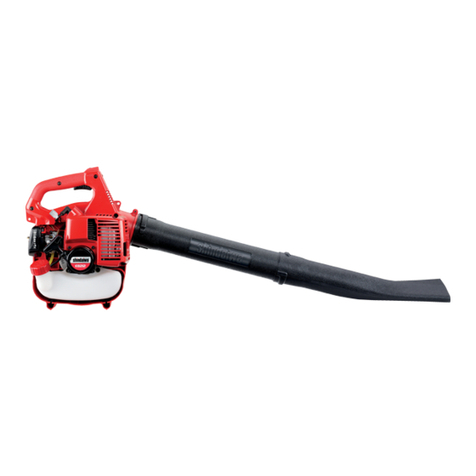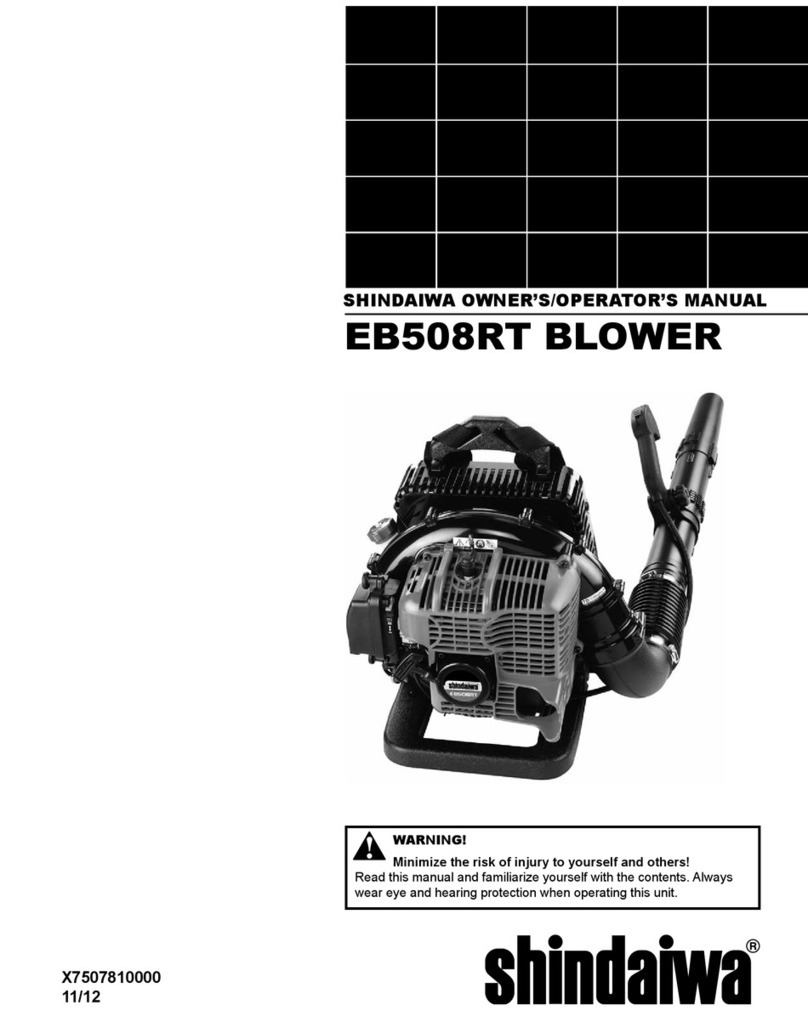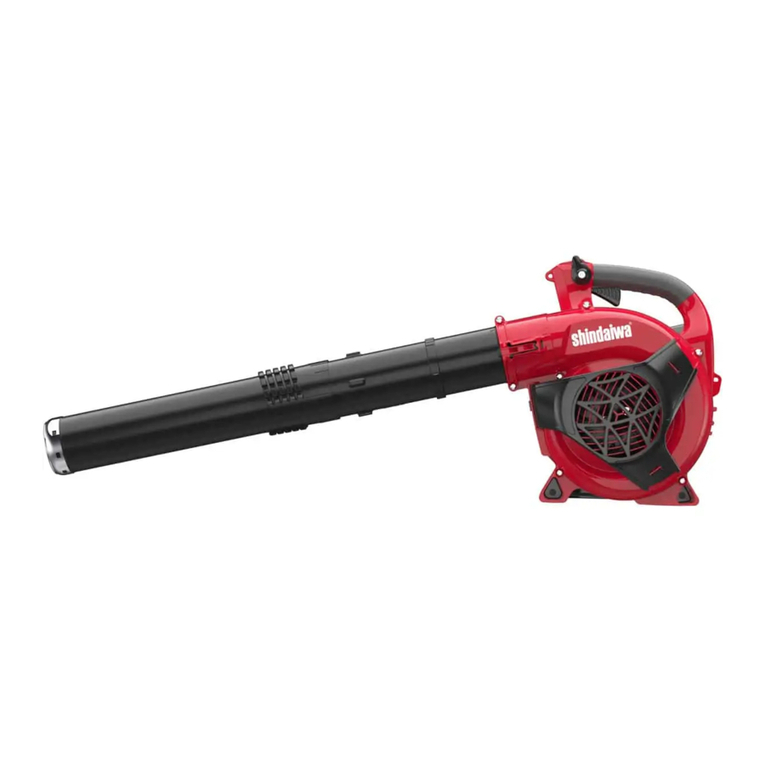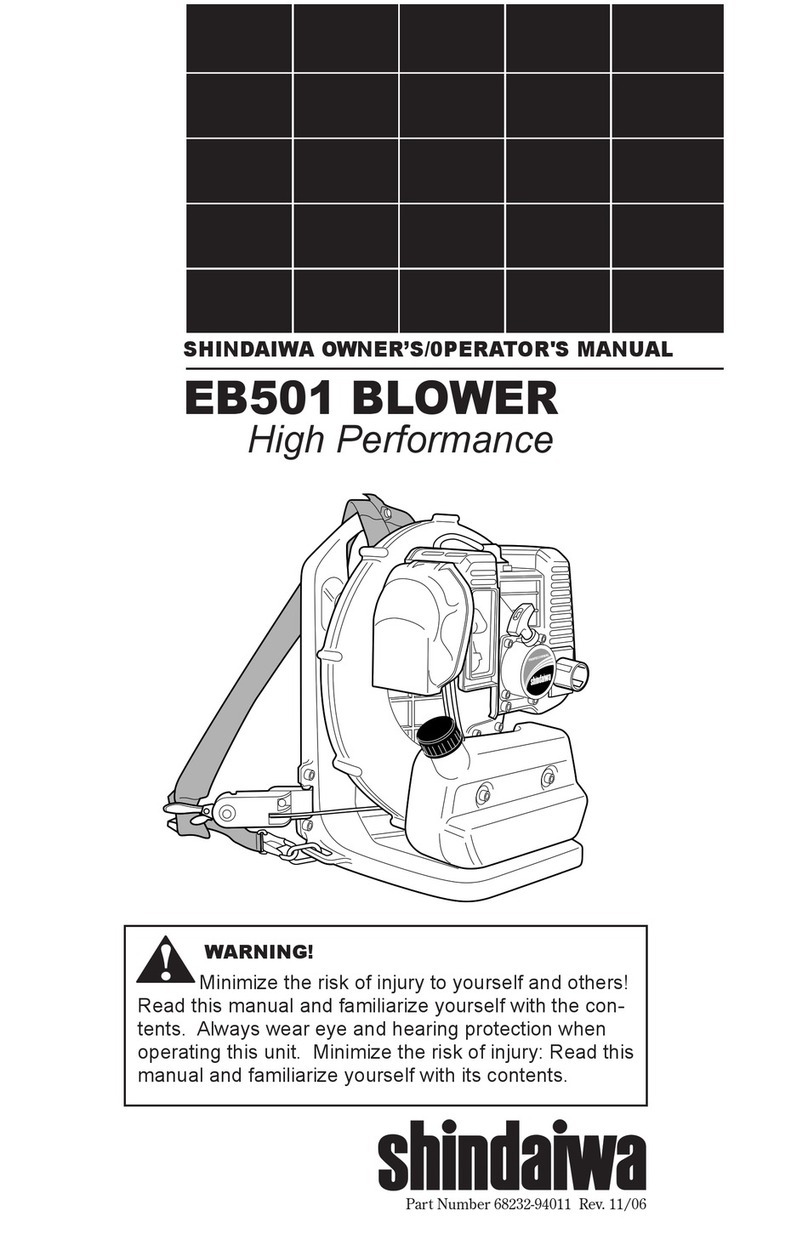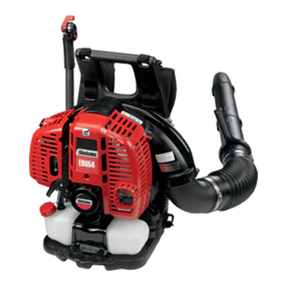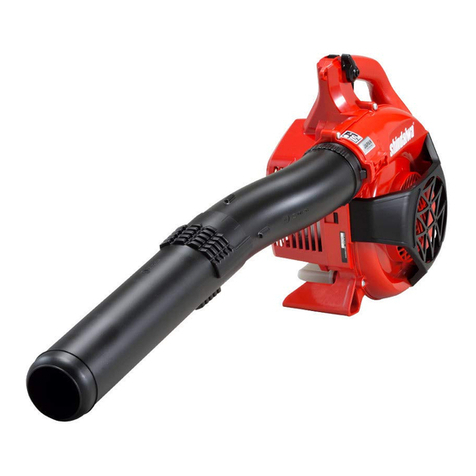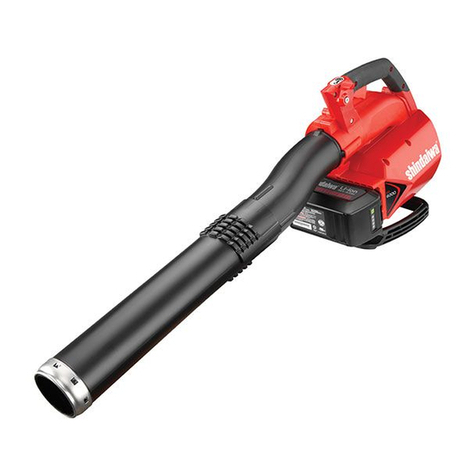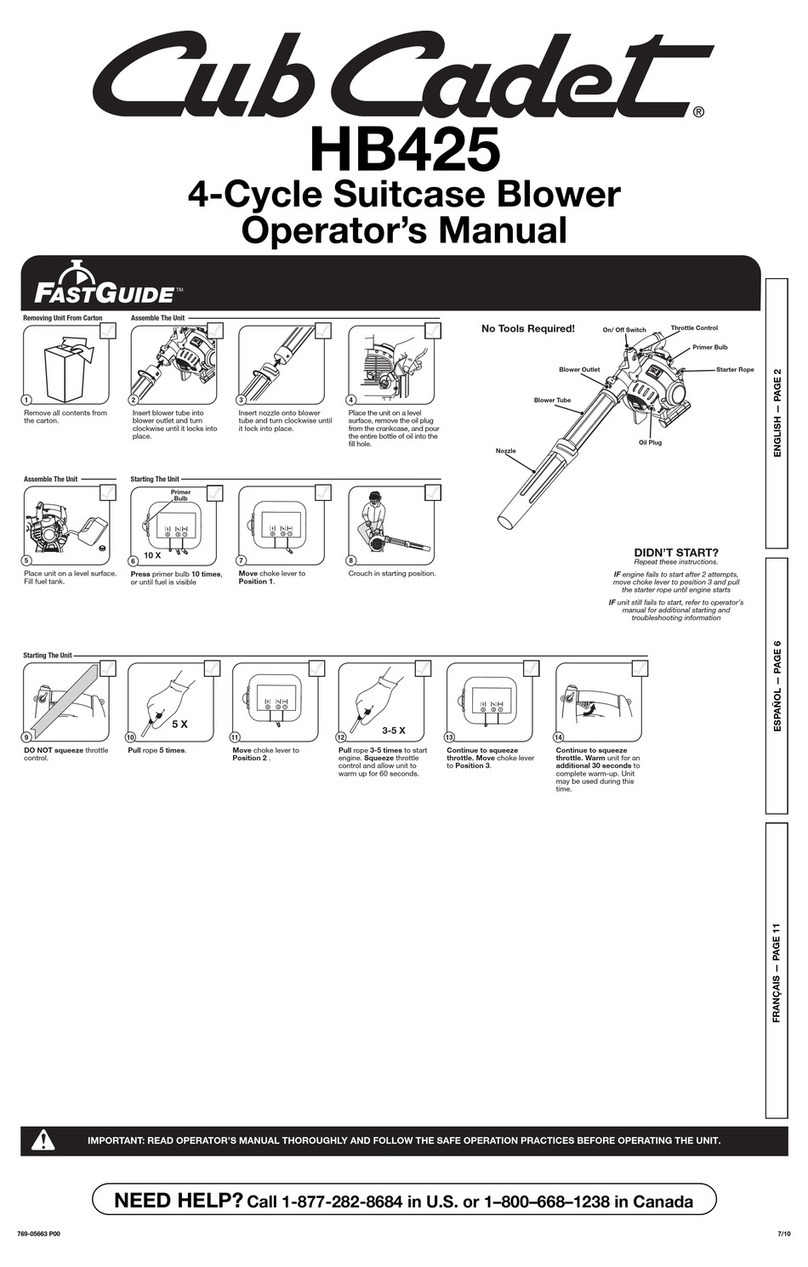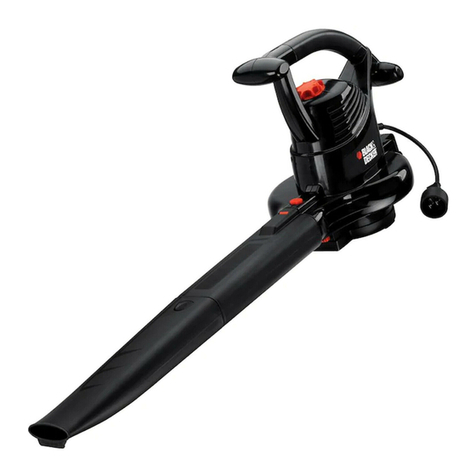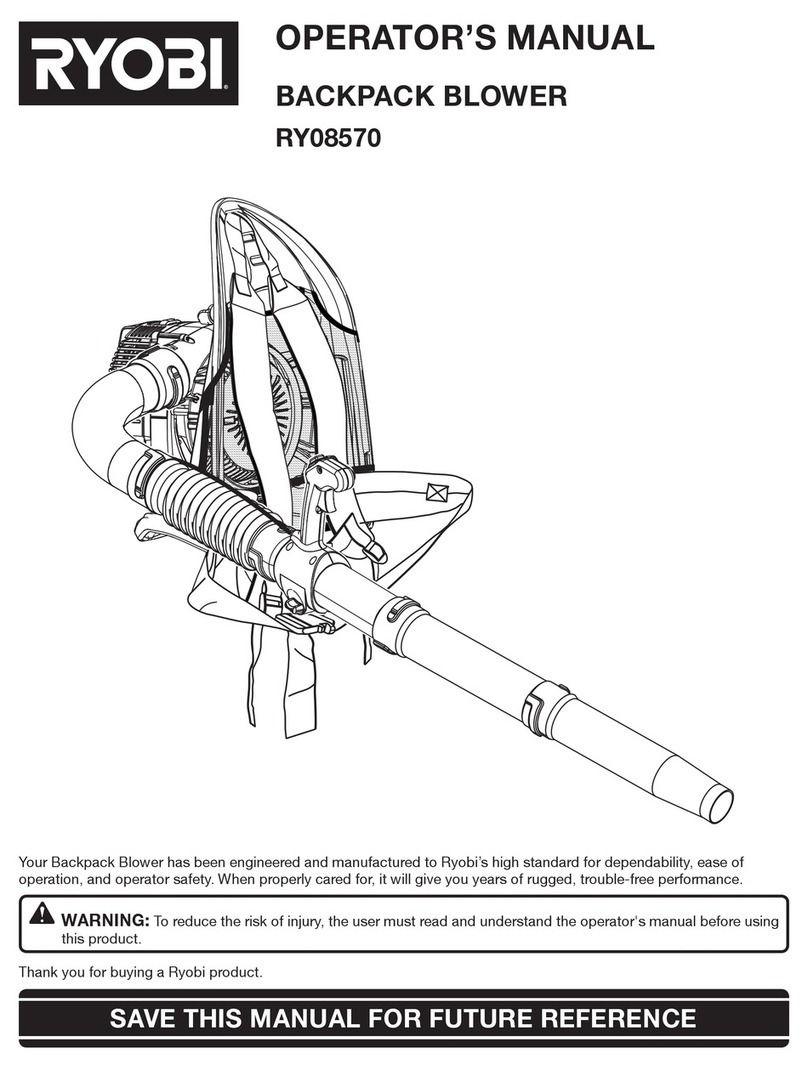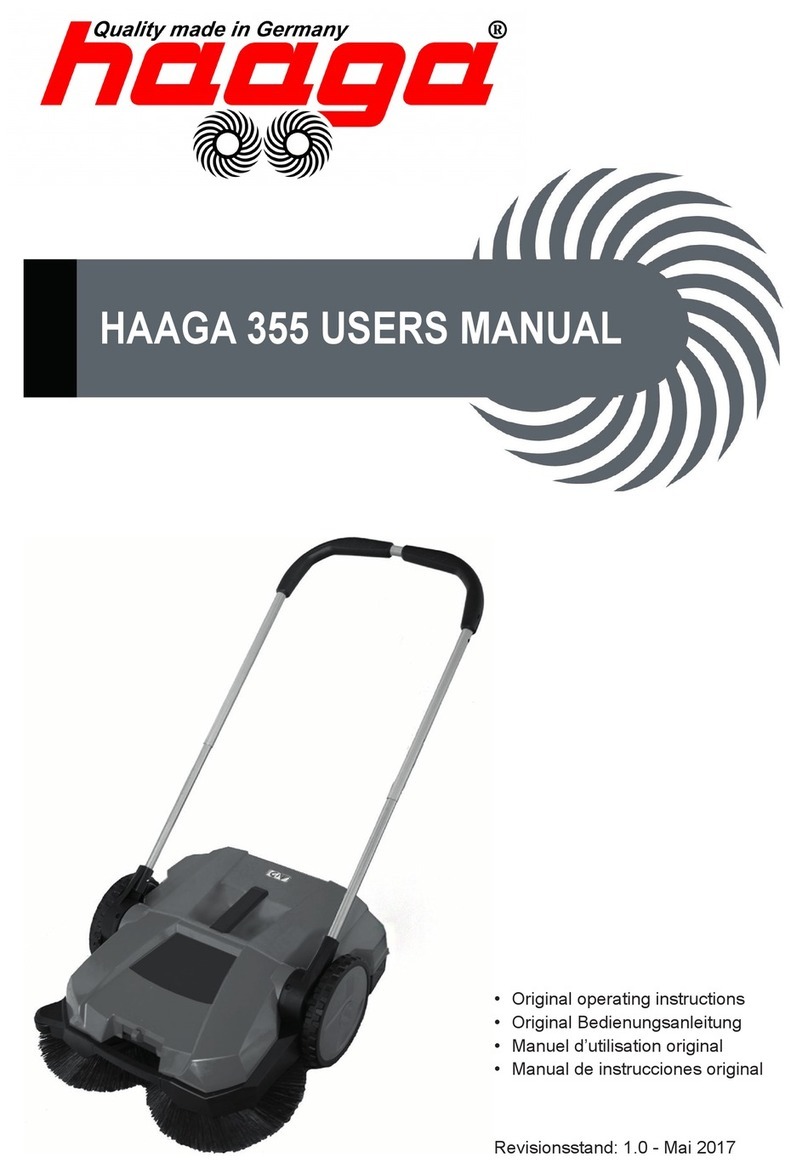
7
Starting the Engine
The impeller will rotate whenever the
blower is operated! Never operate this
blower unless the intake cover and
blower tubes are properly installed and
in good working order!
Starting Procedure
1. Place the blower on the ground.
2. Prime the fuel system by repeatedly depres-
sing the fuel primer bulb until no air bubbles
are visible in the fuel discharge line.
CAUTION!
The recoil starter can be damaged by
abuse!
nNever pull the starter cord to its full
length!
nAlways engage the starter before
cranking the engine!
nAlways rewind the starter cord
slowly!
Never operate the blower if blower
tubes are missing or damaged!
Choke
Closed
Fuel Primer
Bulb
Choke Open
Always wear eye protection when
operating this machine! Never direct
the blower stream toward people or
animals!
Never operate this blower unless all
controls are properly installed and in
good working order.
WARNING!
Danger from thrown dust
or debris!
Danger from rotating
impeller!
WARNING!
3. Cold Engine Only. Choke the engine
by moving the choke lever up (choke is
closed).
Mixing Fuel
1. Place the unit on a flat, level surface,
and wipe any debris from around the
fuel cap.
2. Remove the fuel cap.
3. Fill the tank with clean, fresh fuel.
4. Replace the cap, and wipe away any
spilled fuel before starting the engine.
IMPORTANT!
Mix only enough fuel for your immediate
needs! If fuel must be stored longer than
30-days, it should rst be treated with a
stabilizer such as STA-BIL™ or equivalent
product!
CAUTION!
n Some gasolines contain alcohol as
an oxygenate! Oxygenated fuels
may cause increased operating tem-
peratures. Under certain conditions,
alcohol-based fuels may also reduce
the lubricating qualities of some mix-
ing oils.
n Never use any fuel containing
more than 10% alcohol by volume!
Generic oils and some outboard
motor oils may not be intended for
use in high-performance air cooled
2-cycle engines, and should never
be used in your Shindaiwa engine!
CAUTION!
This engine is designed to operate on
a 50:1 mixture consisting of unleaded
gasoline and a premium 2-cycle mixing
oil only. Use of Non-approved mixing
oils can lead to excessive maintenance
costs and/or engine damage.
CAUTION!
Never attempt to mix fuel in the unit’s
fuel tank. Always mix all fuels in a
clean approved container.
n Use only fresh, clean unleaded gasoline
with a pump octane rating of 87 or
higher.
n Mix fuel with a Premium 2-cycle
mixing oil designed for use with high-
performance 2-cycle air-cooled engines.
n Refer to the following examples of 50:1
fuel to oil mix quantities:
Gasoline 2-cycle mixing oil
liters milliliters
2.5 l.................................... 50 ml
5 l......................................100 ml
10 l....................................200 ml
20 l....................................400 ml
Remove the Fuel
Filler Cap
Filling the Fuel Tank
WARNING!
Minimize the risk of re,
burns, and personal injury!
n STOP engine before refueling.
n ALWAYS allow the engine to cool
before refueling
n ALWAYS open the fuel cap slowly
to allow any pressure build-up
in the tank to release fuel vapor
slowly.
n ALWAYS transport and store fuels
in an approved container.
n Avoid overlling and wipe up all
spilled fuel. Move the engine at
least 3 meters from the fueling
point, storage area, and other
readily ammable materials before
restarting.
n ALWAYS inspect the unit for fuel
leaks before each use. During
each rell, make sure there are
no fuel leaks around the fuel cap
and/or tank. If a fuel leak is evi-
dent, stop using the unit immedi-
ately. Fuel leaks must be repaired
before using the unit.
n NEVER smoke or light any res
near the engine or fuel source.
n NEVER place any ammable ma-
terial near the engine or mufer.
n NEVER operate the engine
without the mufer in good work-
ing condition.
n ALWAYS move the unit to a place
well away from a fuel storage area
or other readily ammable materi-
als before starting the engine.
IMPORTANT!
The primer system only pushes fuel
through the carburetor. Repeatedly
pressing the primer bulb will not ood the
engine with fuel.
